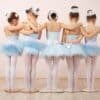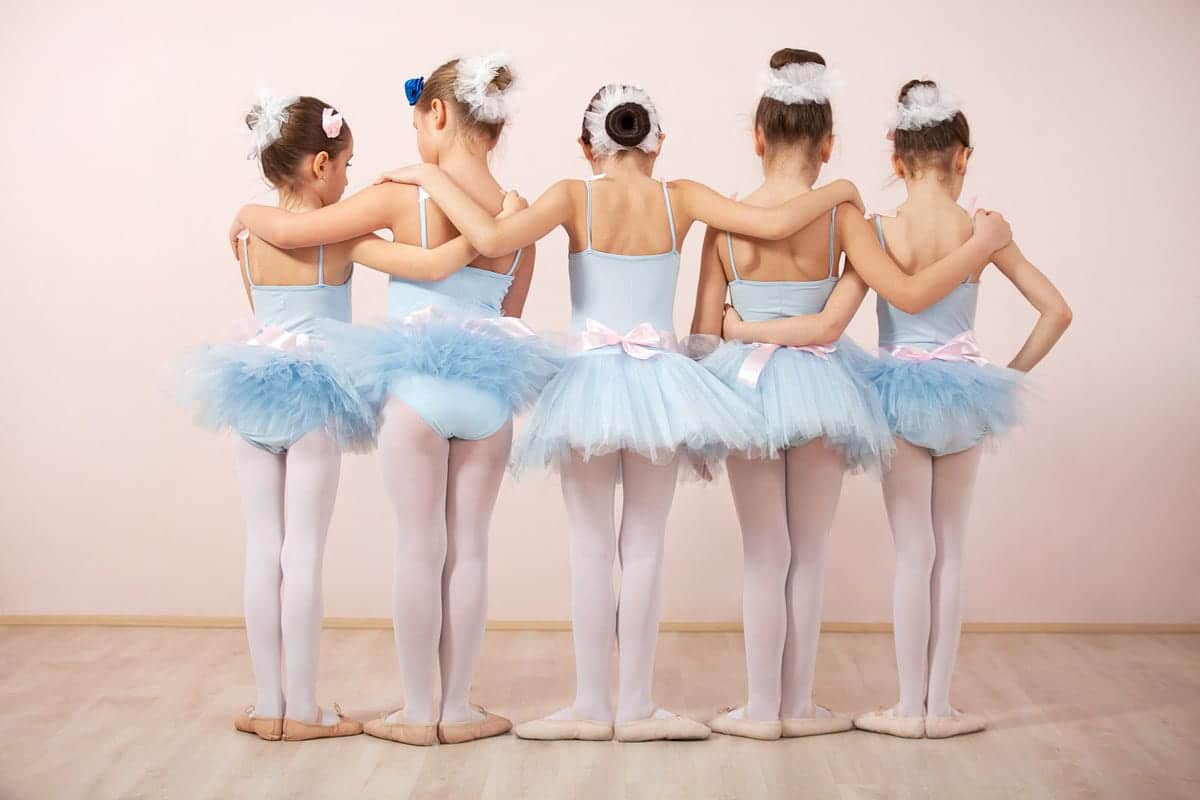Subtotal 0,00 €
Table of Contents
Early Childhood Development: A Guide for Parents on Introducing Baby Ballerinas to the World of Ballet & Dance
Dance is an expressive art form that captivates many, and introducing your child to this world can be a rewarding experience. As parents, understanding the various aspects of early childhood development through dance can help guide your decision-making process. This article explores the myriad benefits of dance, how to choose the right classes, ways to encourage creativity, the importance of discipline, and the development of coordination for your little dancer.
Benefits of Dance
Physical Development
Engaging in dance offers numerous physical benefits for young children. It promotes physical fitness, flexibility, strength, and endurance. Dance classes typically involve a variety of movements that target different muscle groups, facilitating overall body conditioning. As children learn to move their bodies rhythmically, they also develop their motor skills, which are crucial for other physical activities.
Moreover, physical activity in dance helps combat obesity and encourages a healthy lifestyle from a young age. Dance is a fun way to introduce exercise into your child’s routine without it feeling like a chore. It also aids in developing fine motor skills, as young dancers learn to control their movements with precision.
Emotional Well-being
Dancing can be a powerful outlet for self-expression, allowing children to explore their emotions through movement. It helps cultivate a sense of confidence and self-esteem as they master new skills and perform in front of peers. This emotional development is key for building resilience and coping mechanisms in various life situations.
Moreover, participating in dance fosters a positive mindset. Children learn to appreciate their own progress and celebrate achievements, no matter how small. This focus on personal growth rather than competition can lead to improved emotional health and overall happiness.
Social Skills
Dance is inherently a social activity, often involving interaction with classmates and instructors. As children learn to work together in dance routines, they develop important social skills such as teamwork, communication, and empathy. These skills are invaluable, extending beyond the dance studio into everyday interactions.
Through group classes, children make new friends, fostering relationships that can last a lifetime. Learning to navigate social dynamics in a dance setting encourages children to express themselves and be more open to collaboration, further enhancing their social capabilities.
Choosing the Right Class
Age Appropriateness
When selecting a dance class for your child, age appropriateness is a crucial factor. Classes should be tailored to fit developmental stages; what may be suitable for a five-year-old may not be for a seven-year-old. Many studios offer classes categorized by age, ensuring that children engage with peers of similar maturity and skill levels.
Additionally, age-appropriate classes focus on fostering a love for dance rather than strict technical training. For younger dancers, the emphasis is on fun and exploration, while older children may begin to delve into more structured forms of dance.
Instructor Experience
Choosing an experienced instructor is essential for ensuring a safe and enjoyable learning experience. Look for instructors who have experience working with children. A good instructor will not only teach dance techniques but also create a nurturing environment that encourages creativity and self-expression.
Instructors play a pivotal role in shaping a child’s experience in dance. Their ability to communicate effectively and engage with students can significantly impact your child’s enthusiasm and motivation to learn.
Class Size and Structure
The size of the class can greatly affect the individual attention each child receives. Smaller class sizes often allow for more personalized instruction and guidance, which is especially important for beginners. In larger classes, children may receive less individualized feedback, potentially hindering their growth.
Moreover, consider the structure of the class. A well-structured class will include warm-up exercises, skill development, and creative movement opportunities. It should also provide a balance between instruction and play, thereby holding the children’s attention and keeping them engaged.
Encouraging Creativity
Free Dance Opportunities
Encouraging free dance is essential for nurturing creativity in young dancers. Allowing children to express themselves without limitations promotes originality and confidence. Designate time for free dance sessions at home where your child can explore their movements freely.
Consider hosting dance parties with friends, where children can showcase their moves. This social aspect not only strengthens friendships but also cultivates a sense of community and belonging within the art form.
Incorporating Imaginative Play
Imaginative play is another way to encourage creativity in dance. Integrate stories, themes, or characters into dance routines. For instance, turning a dance exercise into a story can engage children more deeply, allowing them to connect emotionally with their movements.
Encouraging your child to create their own dance routines or movements based on a favorite story or character can also enhance their creativity, helping them see dance as a form of storytelling.
Exploration of Dance Styles
Exposing your child to various dance styles can further stimulate their creativity. While ballet might be the traditional starting point, introducing styles like modern, contemporary, or hip-hop can broaden their understanding and appreciation of dance. Each style offers unique movements, rhythms, and expressions, allowing children to discover what resonates with them.
Encouraging children to participate in workshops or classes that focus on different styles can also be beneficial. It not only enhances their versatility as dancers but also helps them develop a richer vocabulary of movement.
Discipline
Importance of Routine
Encouraging children to participate in workshops or classes that focus on different styles can also be beneficial. It not only enhances their versatility as dancers but also helps them develop a richer vocabulary of movement.
Encouraging your child to participate in regular classes fosters a sense of accountability. They learn that progress requires dedication and consistent effort, which is a valuable lesson that extends beyond the dance studio.
Goal Setting
Setting achievable goals is a powerful way to instill discipline in young dancers. Goals can range from mastering a specific dance move to being confident enough to perform in front of an audience. Involving your child in the goal-setting process empowers them to take ownership of their development.
Celebrating milestones along the way reinforces the importance of perseverance and hard work. This approach promotes a growth mindset, encouraging children to view challenges as opportunities for growth rather than obstacles.
Building Resilience
Discipline in dance also equips children with resilience. They learn to handle setbacks, such as not achieving a desired outcome in a performance or not mastering a tricky move immediately. This mindset prepares them to face challenges in various aspects of life, teaching them to persist in the face of adversity.
Moreover, resilience nurtures emotional strength, allowing children to bounce back from disappointments and continue striving for their goals. This invaluable skill is crucial for their overall personal development.
Coordination
Balance and Control
Dance inherently requires a high degree of coordination, which is vital for a child’s physical development. Engaging in dance helps improve body awareness, balance, and control. As children learn different dance steps and routines, they enhance their proprioception—the ability to sense the position of their body in space.
Activities that focus on balance, such as standing on one leg or performing turns, assist in developing core strength and stability. These skills not only benefit their dance abilities but also improve performance in other physical activities, contributing to overall athleticism.
Motor Skills Development
Dance classes are an excellent way to promote fine and gross motor skills development in young children. Through repetition and practice, children learn to coordinate their limbs and movements, enhancing their overall coordination.
Fine motor skills are developed through intricate movements, while gross motor skills are exercised during larger, more dynamic movements. This dual focus prepares children for various physical challenges both in dance and everyday activities.
Enhancing Body Awareness
Body awareness is crucial for young dancers, as it allows them to understand and control their movements better. Dance teaches children how to move different parts of their body independently and in sync with music, enhancing their spatial awareness.
As children gain body awareness, they develop a greater sense of confidence in their physical abilities. This self-assurance translates into other activities, fostering an overall sense of well-being and capability.
Conclusion
In summary, introducing your child to dance opens a world of opportunities for physical, emotional, and social development. The benefits range from improved fitness and emotional well-being to enhanced coordination and social skills. By selecting age-appropriate classes taught by qualified instructors, encouraging creativity, instilling discipline, and fostering coordination through dance, parents can provide their children with an enriching experience.
FAQs
What is the best age to start dance classes for children?
While children can begin informal movement activities as toddlers, structured dance classes typically start around ages 3-4. At this age, classes often focus on fun and creativity rather than technical training.
How can I support my child’s interest in dance at home?
Encourage free dance time, provide a space for practicing, and consider incorporating dance-related activities, such as watching performances together or attending workshops.
What should my child wear to dance class?
Typically, dance classes require specific attire that allows freedom of movement, such as leotards, tights, and ballet shoes. Check with our studio for guidelines.
Are there any risks associated with dance?
Typically, dance classes require specific attire that allows freedom of movement, such as leotards, tights, and ballet shoes. Check with our studio for guidelines.
How can I measure my child’s progress in dance?
Observe their skills development, participation, and enthusiasm. Instructors often provide feedback and assessments, allowing you to gauge improvement over time.





Comments are closed